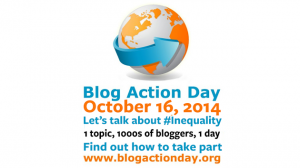
My inbox has been stuffed lately with articles, invitations, etc., related to “onboarding.” I’m guessing that reflects an expected uptick in hiring, plus the notion that better onboarding creates more productive (and therefore more cost-effective) employees. Get an overview of the onboarding value proposition in this HR Management article, which summarizes some findings from a recent Aberdeen Research report.
But whatever the reason for interest around this topic, it’s worth a revisit from the recruiting perspective.
Most discussions acknowledge that onboarding actually begins during—not after—the hiring phase. For example, Mary Lorentz’s very good post Un-Boarding: 5 Ways Companies Get Employee Onboarding Wrong notes that onboarding should begin during the interview. In a helpful post on Creating an Onboarding Plan, HR Bartender Sharlyn Lauby observes: “onboarding to me is really about the pre- and post- hire process that helps an employee become acclimated to their new working environment.”
And yet! There’s not much said in either case—or anywhere else–of what this truism might mean in practice. So I’ll go out on a limb and propose this basic standard for successful preboarding:
Don’t make the future employee hate the company before they get hired.
Onboarding is all about engaging the new employee, and that process is much easier if the employee is already disposed to like their new job. The more unpleasantness they have experienced on the way to getting hired, the less optimistic they will be about the company. Although some new-hires had a choice (i.e., they were persuaded to accept this position instead of one or more others) many or most would have taken almost any job offered—so they may be more relieved to be employed than excited about the new opportunity.
Here are three (hopefully obvious) rules for not alienating prospects online:
- Make the application process efficient and pleasant!
- Keep in touch—acknowledge applications, respond to email, and update applicants on their status.
- Provide plenty of relevant information on the website—and of course, make it easy to navigate.
And a couple of rules for not alienating prospects in person:
- Be sure the interviewer is prepared—and that absolutely does include reading the candidate’s resume beforehand.
- Listen! Whether the interview process is structured or unstructured, leave room to draw the candidate out with real conversation, not PR fluff or obligatory chat.
Bonus thought: Feature some new-hires on the Careers site, talking about their experiences with the whole process: finding/researching the company, applying, interviewing, and getting that magical offer.
(Thanks for the original boarding snapshot, Matti Blume.)
Cynthia Giles has followed a serpentine career path from academia to publishing to marketing and design to information technology and corporate communications. There’s plenty of detail about this journey at www.cynthiagiles.com, but briefly--the common theme has been ideas, and how to present them effectively. Along the way, she became an accidental expert on data warehousing and business intelligence, and for the past ten years she has combined corporate contracting with an independent consulting practice that focuses on marketing strategy for smaller businesses and non-profits.
Having spent quite a bit of time looking for work, and anywhere from two weeks to two years inside a wide variety of American companies—she has given much thought to what works (and what doesn’t) when it comes to creating a great employment fit.



Thanks much for the HR Bartender mention! I really like the bonus thought about candidates sharing their experiences. Great info for a company blog…